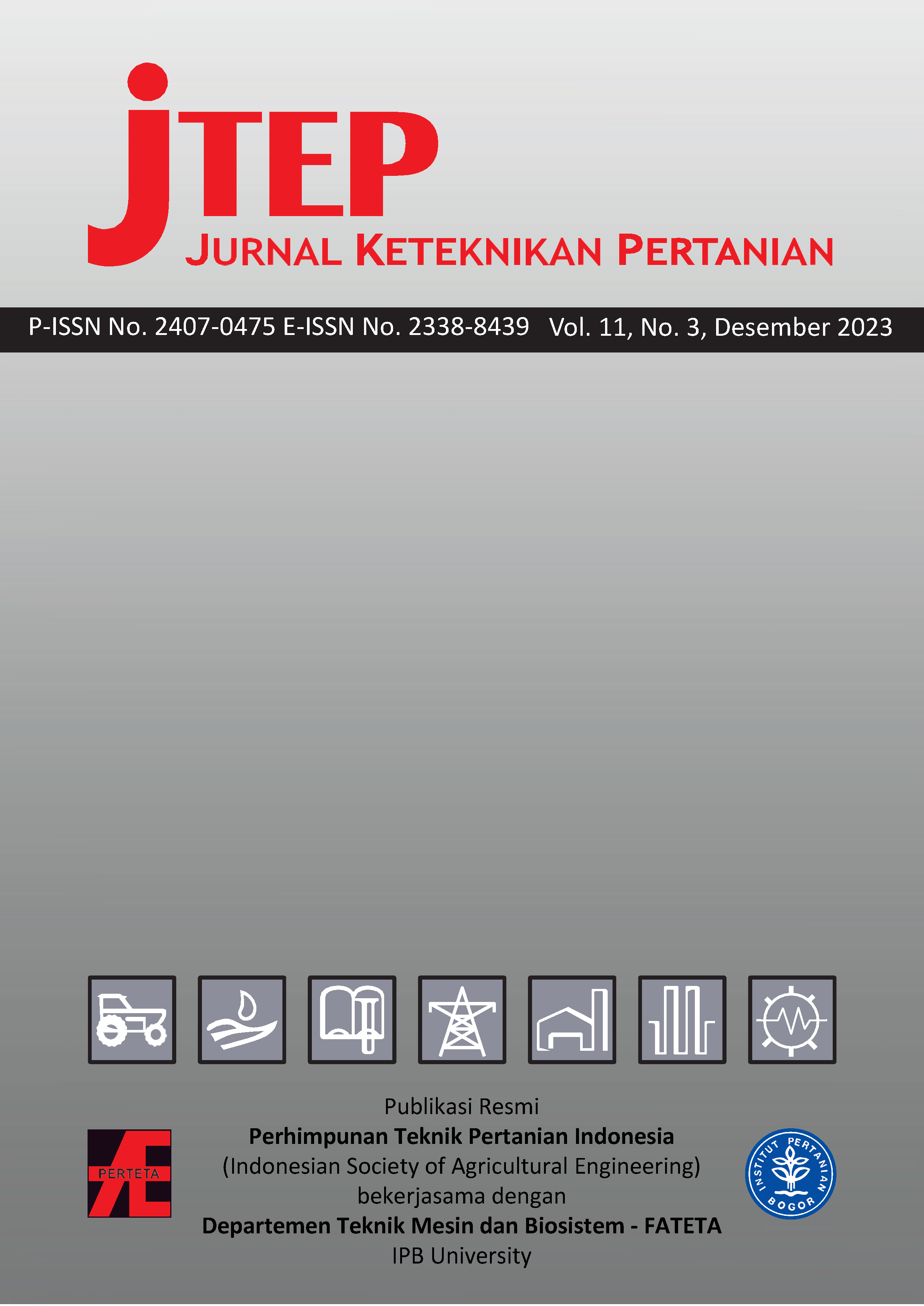Penentuan Daya Tampung Beban Pencemaran Sungai Bedadung Ruas Kaliwates Berdasarkan Keberadaan Agroindustri Tahu Menggunakan WASP
Abstract
The Bedadung River section of Kaliwates is used as a source of water intake for Perumdam Tirta Pendalungan as Municipal Water Works in Jember Regency, so it must comply with the criteria for class I water quality standards. This study aims to determine the capacity to accommodate the pollution load of the Bedadung River from the presence of tofu agroindustry using WASP. The water quality parameters used are Biochemicals Oxygen Demand (BOD) and Total Suspended Solid (TSS). The results of the value of the water quality model using WASP meet the class I water quality allocation on the BOD parameter but on the TSS parameter it does not meet. Based on the calculation of the pollution load carrying capacity, the Bedadung River Kaliwates section accept the pollutant load input because it has a pollution load capacity value of 545.86 kg/day for BOD, but it does not accept the pollutant load input of TSS values because the pollution load carrying capacity is - 2270.01 kg/day. The simulation by reducing the concentration of pollutant sources by the quality standards that increases the carrying capacity of the Bedadung River pollution load to 688.33 kg/day for the BOD parameter and -1564.72 kg/day for the TSS parameter.
Authors

This work is licensed under a Creative Commons Attribution-ShareAlike 4.0 International License.
Authors submitting manuscripts should understand and agree that copyright of manuscripts of the article shall be assigned/transferred to Jurnal Keteknikan Pertanian. This work is licensed under a Creative Commons Attribution-ShareAlike 4.0 International License (CC BY-SA) where Authors and Readers can copy and redistribute the material in any medium or format, as well as remix, transform, and build upon the material for any purpose, but they must give appropriate credit (cite to the article or content), provide a link to the license, and indicate if changes were made. If you remix, transform, or build upon the material, you must distribute your contributions under the same license as the original.

